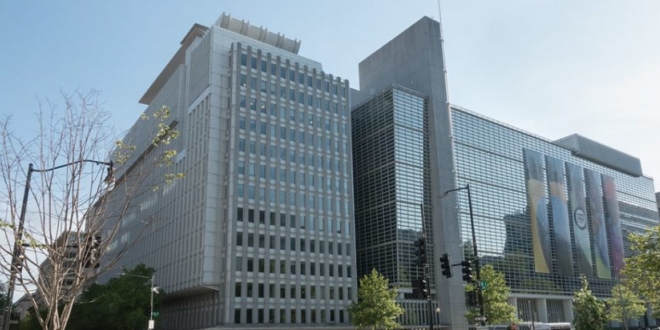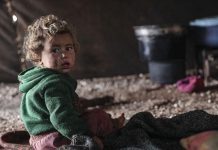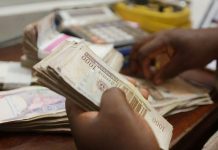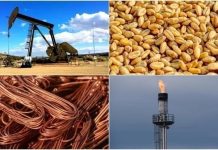AfricaPress-Tanzania: Research shows that the Southern Africa Development Community (SADC) countries are vulnerable to droughts and other extreme natural and human-induced hazards. These hazards and risks affect development and remain a concern for socio-economic and sustainable development.
The World Bank, with support from the Cooperation in International Waters in Africa (CIWA) together launched the Southern African Drought Resilience Initiative (SADRI) last week.
SADRI is an initiative that aims to provide tools that countries could use to better implement and coordinate drought resilience strategies within and across borders and sectors. The initiative aims to foster integrated drought risk management across the energy-water-food environment and help lay foundations for greater resilience in southern African countries to the multi-sectoral influence of drought.
Speaking at the launch, World Bank Senior Water Resources Management Specialist Anna Cestari said SADC economies are very vulnerable to climate change and drought. Cestari said these economies are mostly highly dependent on natural resources and droughts cause ecosystems degradation and food insecurity.
Research shows that the Southern Africa Development Community (SADC) countries are vulnerable to droughts and other extreme natural and human-induced hazards
“Droughts are felt across borders. Meteorological, hydrological and agricultural droughts affect landscapes beyond national borders. Impacts are felt across the economy. Cities run out of water, power generation declines and rural livelihoods collapse, causing widespread food insecurity,” said Cestari.
SADRI’s main objectives are to generate tools and dialogue for enhancing partnerships and capacity across SADC member states and to inform future national and regional investments in drought related activities. This project targets the 16 SADC member states and will be implemented from September 2020 to October 2022.
World Bank Practice Manager and lead at the World Bank’s water engagement in the SADC region, Maria Sotomayor, said SADRI will contribute to change by supporting countries, cities and regional bodies to take an integrated approach to drought risk management that is proactive and coordinated.
“Our vision is a drought resilient SADC region in which governments, institutions and households are able to withstand climate change and associated economic shocks befitting all citizens,” said Sotomayor.
Sotomayor opened the SADRI launch welcoming SADRI member countries, the secretariat and partners.
She said the drought challenge requires a response that is regional and integrated across sectors.
“We need to collectively engage in how partners can jointly realise a vision for drought resilience in the region, as supported by the SADRI mission, and doing so through identifying opportunities and challenges for collaboration. We also need to co-develop a participation plan and next steps,” said Sotomayor.
Research shows that urban droughts produce an imbalance of the water supply and water demand. This situation is exacerbated in water scarce cities. Droughts also cause food insecurity and famines, killing humans and decimating livestock.
It is proven that drought can lead to displacement and expansion of crop land, increasing competition with host communities and ecosystems. An increase in water demand and a decline in water reservoir levels impacts hydropower production and the economy.
Senior Climate Change Specialist at the World Bank Nathan Engle spoke of the approach that SADRI will follow. Engle said SADRI will use the integrated drought risk management as a guiding framework.
“The three key elements will include drought monitoring and early warning systems, drought vulnerability and risk assessment, as well as drought preparedness, mitigation and response,” said Engle.
The World Bank, with support from the Cooperation in International Waters in Africa (CIWA) together launched the Southern African Drought Resilience Initiative (SADRI) last week
He said SADRI will build the analytical and institutional foundations to catalyse national and regional investment in integrated drought resilience. Adding that the drought challenge therefore required a response that is regional and integrated across sectors.
Country representative for the international water management institute’s regional office in southern Africa, Dr Inga Jacobs-Mata, facilitated the discussions at the launch. Jacobs-Mata said establishing a drought monitoring and early warning system is often considered the foundational pillar for integrated drought risk management.
Jacobs-Mata said the key messages included the need for inter-institutional and inter-sectoral coordination, the strengthening of country capacity in vulnerability and impact assessments as well as drought monitoring, and the need to strengthen policy and institutional frameworks.
Jacobs-Mata said partners and SADC member countries should think about what activities SADRI should prioritise.
“These include whether the World Bank and CIWA should work with SADC member states and the secretariat to scale up an operational drought monitor and early warning system for the region, international organisation coordination or to develop clear priorities for regional and country investments to boost drought resilience,” said Jacobs-Mata.







